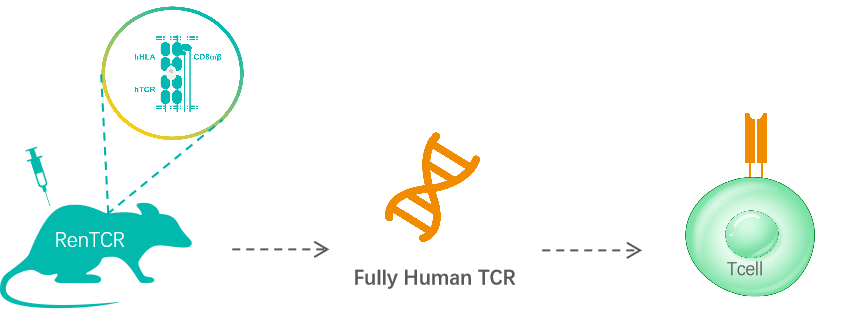

TCR-based therapeutics demonstrate significant advantages and promising prospects. Compared to CAR-T, TCR-T cells can recognize intracellular antigens, exhibit superior infiltration into solid tumors, and show a lower incidence of cytokine release syndrome (CRS). TCR protein drugs further overcome the limitations of cell-based therapies, offering advantages such as lower costs, simpler production processes, and enhanced safety profiles, enabling the extension of TCR therapies to a wider range of therapeutic areas. In addition, soluble TCR can also be used in TCE therapies.

| Target | Type of antigen | HLA | Immunization | Binding Assay | In Vitro Function Verification | Epitope Identification | Specificity Verification | In Vivo Function Evaluation | Safety Evaluation |
| MAGEA4/8 | CTA | HLA-A2.1 |
|
||||||
| PRAME | CTA | HLA-A2.1 |
|
||||||
| PRAME | CTA | HLA-A24.2 |
|
||||||
| NY-ESO-1 | CTA | HLA-A2.1 |
|
||||||
| MAGEA1 | CTA | HLA-A2.1 |
|
||||||
| MAGEA10 | CTA | HLA-A2.1 |
|
||||||
| KRAS G12V | Neoantigen | HLA-A11.1 |
|
||||||
| KRAS G12D | Neoantigen | HLA-A11.1 |
|
||||||
| HPV16 E7 | Virus | HLA-A2.1 |
|
||||||
CTA: Cancer-testis Antigen